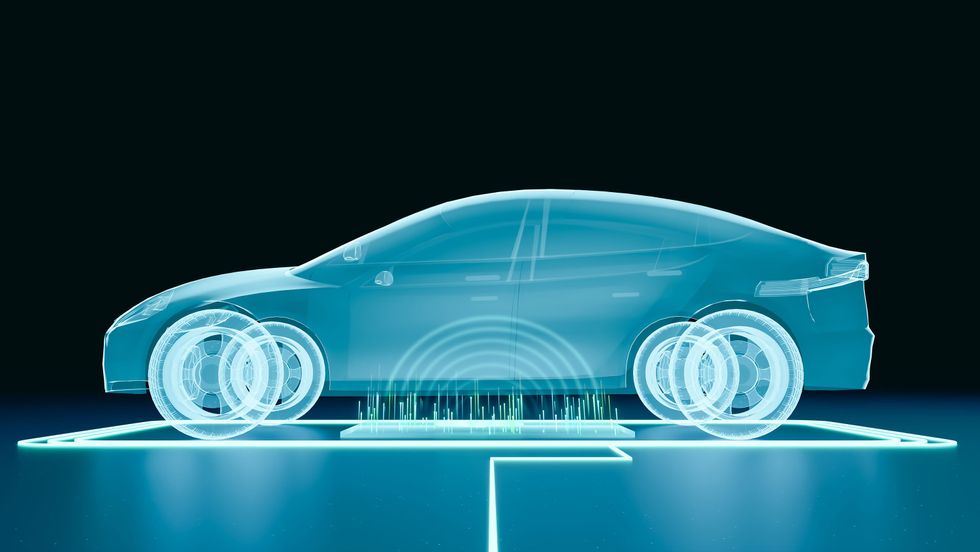Research Bits: Aug. 5
Measuring temperature with neutrons
Researchers from Osaka University, National Institutes for Quantum Science and Technology, Hokkaido University, Japan Atomic Energy Agency, and Tokamak Energy developed a way to rapidly measure the temperature of electronic components inside a device using neutrons.
The technique, called ‘neutron resonance absorption’ (NRA), examines neutrons being absorbed by atomic nuclei at certain energy levels to determine the properties of the material. After being generated using high-intensity laser beans, the neutrons were then decelerated to a very low energy level before being passed through the sample, in this case plates of tantalum and silver. The temporal signal of the NRA was altered in a predictable manner when the sample material’s temperature was changed.
“This technology makes it possible to instantaneously and accurately measure temperature,” said Zechen Lan of Osaka University, in a statement. “As our method is non-destructive, it can be used to monitor devices like batteries and semiconductor devices.”
The technique can acquire temperature data in a window of 100 nanoseconds, and the measurement device itself is about a tenth of the size of similar equipment.
“Using lasers to generate and accelerate ions and neutrons is nothing new, but the techniques we’ve developed in this study represent an exciting advance,” added Akifumi Yogo of Osaka University, in a statement. “We expect that the high temporal resolution will allow electronics to be examined in greater detail, help us to understand normal operating conditions, and pinpoint abnormalities.” [1]
Mapping heat transfer
Researchers from the University of Rochester applied optical super-resolution fluorescence microscopy techniques used in biological imaging to map heat transfer in electronic devices using luminescent nanoparticles.
By applying highly doped upconverting nanoparticles to the surface of a device, the researchers were able to achieve super-high resolution thermometry at the nanoscale level from up to 10 millimeters away.
Rochester researchers demonstrated their super-high resolution thermometry techniques on an electrical heater structure that the team designed to produce sharp temperature gradients. (Credit: University of Rochester / J. Adam Fenster)
“The building blocks of our modern electronics are transistors with nanoscale features, so to understand which parts of overheating, the first step is to get a detailed temperature map,” said Andrea Pickel, an assistant professor from the University of Rochester’s Department of Mechanical Engineering, in a release. “But you need something with nanoscale resolution to do that.”
The researchers demonstrated the technique using an electrical heater structure designed to produce sharp temperature gradients. To improve the process, the team hopes to lower the laser power used and refine the methods for applying layers of nanoparticles to the devices. [2]
ML for predicting thermal properties
Researchers from MIT, Argonne National Laboratory, Harvard University, the University of South Carolina, Emory University, the University of California at Santa Barbara, and Oak Ridge National Laboratory propose a new machine learning framework that provides much faster prediction of phonon dispersion relations, an important measurement for determining the thermal properties of a material and how heat moves through semiconductors and insulators.
Heat-carrying phonons have an extremely wide frequency range, and the particles interact and travel at different speeds. “Phonons are the culprit for the thermal loss, yet obtaining their properties is notoriously challenging, either computationally or experimentally,” said Mingda Li, associate professor of nuclear science and engineering at MIT, in a release.
The researchers started with a graph neural network (GNN) that converts a material’s atomic structure into a crystal graph comprising multiple nodes, which represent atoms, connected by edges, which represent the interatomic bonding between atoms.
To make it suitable for predicting phonon dispersion relations, they created a virtual node graph neural network (VGNN) by adding a series of flexible virtual nodes to the fixed crystal structure to represent phonons. This enabled the VGNN to skip many complex calculations when estimating phonon dispersion relations, making it a more efficient method than a standard GNN.
Li noted that a VGNN could be used to calculate phonon dispersion relations for a few thousand materials in a few seconds with a personal computer. The technique could also be used to predict challenging optical and magnetic properties. [3]
References
[1] Lan, Z., Arikawa, Y., Mirfayzi, S.R. et al. Single-shot laser-driven neutron resonance spectroscopy for temperature profiling. Nat Commun 15, 5365 (2024). https://doi.org/10.1038/s41467-024-49142-y
[2] Ziyang Ye et al., Optical super-resolution nanothermometry via stimulated emission depletion imaging of upconverting nanoparticles. Sci. Adv. 10, eado6268 (2024) https://doi.org/10.1126/sciadv.ado6268
[3] Okabe, R., Chotrattanapituk, A., Boonkird, A. et al. Virtual node graph neural network for full phonon prediction. Nat Comput Sci 4, 522–531 (2024). https://doi.org/10.1038/s43588-024-00661-0
The post Research Bits: Aug. 5 appeared first on Semiconductor Engineering.





